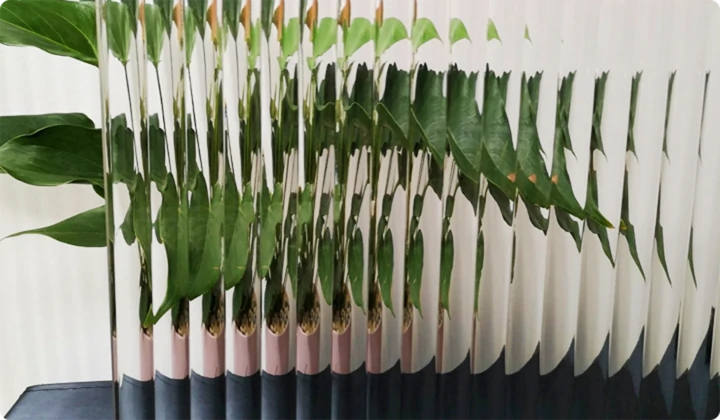The Float Glass Method An Innovative Approach to Glass Production
The float glass method, embraced globally since its inception in the mid-20th century, represents a revolutionary advancement in the manufacturing of flat glass. This process not only enhances the quality and efficiency of glass production but also sets a standard for modern glassmaking.
At its core, the float glass process involves floating molten glass on a bed of molten tin. This technique allows for the creation of flat glass sheets with exceptional flatness and clarity. The origin of this method traces back to the 1950s when Sir Alastair Pilkington, an English physicist, developed the idea. His innovative approach transformed the glass industry by providing a practical solution to the challenges posed by earlier methods of glass making, which often resulted in uneven surfaces and a plethora of defects.
The process begins with the melting of raw materials—silica sand, soda ash, and limestone—in a furnace at temperatures exceeding 1,600 degrees Celsius. The resulting molten glass is then carefully poured onto a layer of molten tin, which is maintained at a temperature slightly below that of the glass. The density difference causes the lighter glass to float on top, forming a smooth surface. This floating phenomenon is crucial, as it allows the glass to spread out evenly, producing uniform thickness and eliminating surface imperfections.
Once the molten glass has spread across the tin bath, it undergoes a cooling process in a controlled environment. The glass is gradually cooled to prevent thermal stress and ensure stability. After cooling, the glass sheets are cut into desired sizes for various applications, from windows and doors to mirrors and display cases.
float glass method
One significant advantage of the float glass method is its efficiency. Traditional glass manufacturing techniques were often labor-intensive and time-consuming, resulting in higher production costs. In contrast, the float glass process streamlines production, allowing for continuous operation and reduced labor needs. Consequently, this has led to a substantial decrease in the cost of flat glass, making it more accessible to various industries.
Furthermore, the float glass method is environmentally friendly. Modern advancements in the process have allowed for the recycling of raw materials and the reduction of energy consumption. Manufacturers can utilize recycled glass cullet in the melting process, which lowers the energy requirements, thus reducing carbon emissions. This commitment to sustainability resonates with contemporary consumer values and regulatory standards, positioning float glass as a responsible choice in construction and design.
Another noteworthy aspect of the float glass method is its adaptability. The basic principle of the process can be tailored to produce specialized glass products, including low-emissivity (low-E) glass, which enhances thermal performance, and laminated glass, offering safety and security features. This versatility makes float glass suitable for an array of applications in architectural design, automotive manufacturing, and solar panel production.
In conclusion, the float glass method is not merely a technique but a paradigm shift in glass production. With its origins in innovation, its contributions to efficiency and sustainability, and its adaptability to various applications, it has profoundly changed the glass industry. As technology continues to evolve, the float glass method stands as a testament to the importance of innovation in achieving quality, efficiency, and environmental responsibility in manufacturing processes. The future holds promising developments that could further enhance this remarkable method, solidifying its position as the backbone of flat glass production worldwide.
 Afrikaans
Afrikaans  Albanian
Albanian  Amharic
Amharic  Arabic
Arabic  Armenian
Armenian  Azerbaijani
Azerbaijani  Basque
Basque  Belarusian
Belarusian  Bengali
Bengali  Bosnian
Bosnian  Bulgarian
Bulgarian  Catalan
Catalan  Cebuano
Cebuano  Corsican
Corsican  Croatian
Croatian  Czech
Czech  Danish
Danish  Dutch
Dutch  English
English  Esperanto
Esperanto  Estonian
Estonian  Finnish
Finnish  French
French  Frisian
Frisian  Galician
Galician  Georgian
Georgian  German
German  Greek
Greek  Gujarati
Gujarati  Haitian Creole
Haitian Creole  hausa
hausa  hawaiian
hawaiian  Hebrew
Hebrew  Hindi
Hindi  Miao
Miao  Hungarian
Hungarian  Icelandic
Icelandic  igbo
igbo  Indonesian
Indonesian  irish
irish  Italian
Italian  Japanese
Japanese  Javanese
Javanese  Kannada
Kannada  kazakh
kazakh  Khmer
Khmer  Rwandese
Rwandese  Korean
Korean  Kurdish
Kurdish  Kyrgyz
Kyrgyz  Lao
Lao  Latin
Latin  Latvian
Latvian  Lithuanian
Lithuanian  Luxembourgish
Luxembourgish  Macedonian
Macedonian  Malgashi
Malgashi  Malay
Malay  Malayalam
Malayalam  Maltese
Maltese  Maori
Maori  Marathi
Marathi  Mongolian
Mongolian  Myanmar
Myanmar  Nepali
Nepali  Norwegian
Norwegian  Norwegian
Norwegian  Occitan
Occitan  Pashto
Pashto  Persian
Persian  Polish
Polish  Portuguese
Portuguese  Punjabi
Punjabi  Romanian
Romanian  Russian
Russian  Samoan
Samoan  Scottish Gaelic
Scottish Gaelic  Serbian
Serbian  Sesotho
Sesotho  Shona
Shona  Sindhi
Sindhi  Sinhala
Sinhala  Slovak
Slovak  Slovenian
Slovenian  Somali
Somali  Spanish
Spanish  Sundanese
Sundanese  Swahili
Swahili  Swedish
Swedish  Tagalog
Tagalog  Tajik
Tajik  Tamil
Tamil  Tatar
Tatar  Telugu
Telugu  Thai
Thai  Turkish
Turkish  Turkmen
Turkmen  Ukrainian
Ukrainian  Urdu
Urdu  Uighur
Uighur  Uzbek
Uzbek  Vietnamese
Vietnamese  Welsh
Welsh  Bantu
Bantu  Yiddish
Yiddish  Yoruba
Yoruba  Zulu
Zulu 

